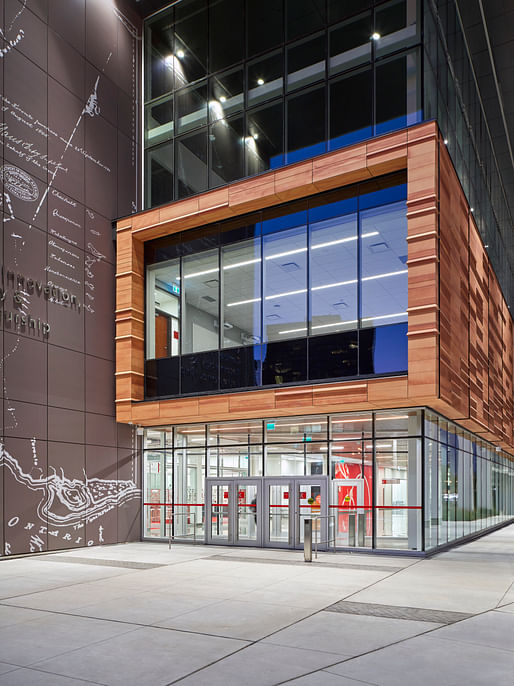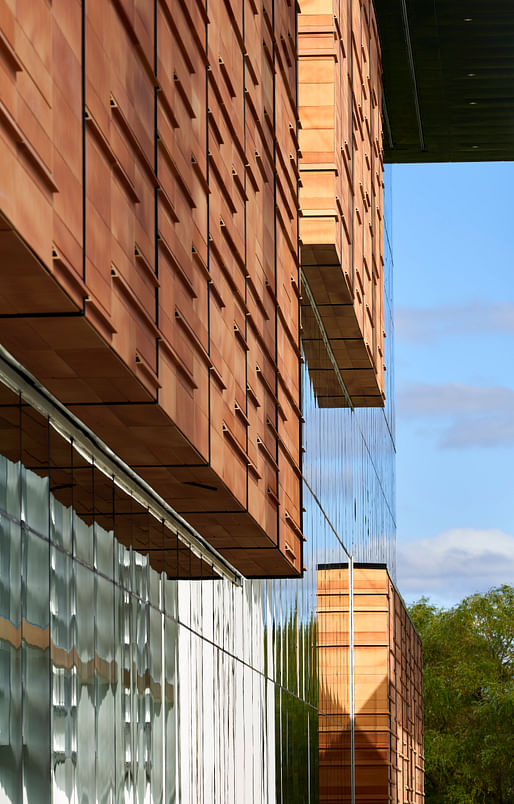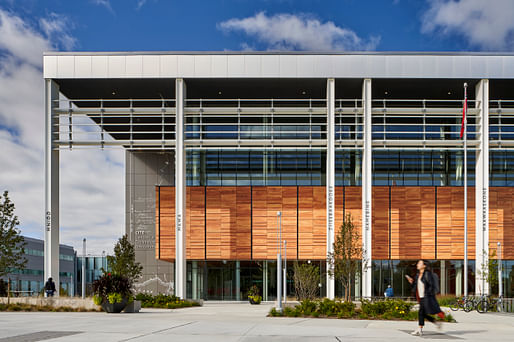
As part of Seneca’s commitment to furthering Indigenous education, Perkins and Will has unveiled the Centre for Innovation, Technology and Entrepreneurship (CITE) on the Newnham Campus. Perkins and Will worked in collaboration with the First Peoples@Seneca Office to ensure that the Indigenous communities the building represents would be conveyed in the design and artwork throughout the structure.

"We developed a very fulsome consultation process to ensure that Seneca’s Indigenous communities took pride and saw themselves reflected in the building," said Mark Solomon, Dean of Students and Indigenous Education at Seneca in a statement. "CITE is about ingrained knowledge that has been part of the land for generations...We needed to have Indigenous communities meaningfully contribute to its design. These communities became the content of the building."

CITE features robotic labs, incubator spaces, open-concept study areas and lounges, and event space, giving students, staff, and faculty a dynamic space to pursue academic excellence and facilitate community.

As one moves through the building, eight murals that investigate the dichotomy between Indigenous cultural elements and technology can be found. Created in collaboration with design firm Bruce Mau Design, some graphics include a hoop dance, a pow wow, DNA sequencing, and a map of the Internet.

Within the main atrium lies a terrazzo medallion inset into the floor. It was created by Indigenous artist Joseph Sagaj. Titled, the Circle of Indigenous Knowledge, it spans 10 meters in diameter and features symbols and cultures of First Nations people of the Great Lakes, the Metis and the Inuit of the Arctic.

Moreover, one of the main entrances shows the signature page and map from the 1787 Toronto Purchase land deal between the Mississaugas of the Credit and the British Crown. Another entrance depicts a map of the universe, meant to represent the progression of technology since the signing of the treaty. 13 columns stand at the front facade of the building, each representing one of the 13 moons of the lunar cycle with the names of each written in Anishnaabe.

"We organized the structural order of the building elements of the building to support these theme. As you walk through CITE, you encounter overlapping Indigenous and technological stories that initially might speak to different audiences, but over time our hope is that they merge together as one," said Andrew Frontini, Principal and Design Director at Perkins and Will’s Toronto studio.

No Comments
Block this user
Are you sure you want to block this user and hide all related comments throughout the site?
Archinect
This is your first comment on Archinect. Your comment will be visible once approved.